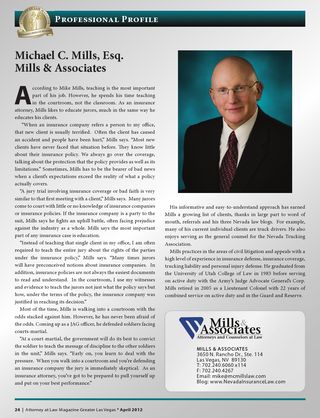It happens, you are driving down the street and suddenly a dog, or child darts out in front of your vehicle, you slam on the brakes, or swerve, and BAM, you’ve hit something or worse someone. Or you were able to stop in time, but the car behind didn’t, and BAM, hit from behind. Or the car in front of you suddenly stopped and you struck it. Whether or not you were at fault in any of the above scenarios may depend on whether or not your conduct qualifies under the Sudden Emergency Doctrine.
In brief, the doctrine provides that a person confronted with a “sudden emergency” which he didn’t cause and who acts with his best judgment is not guilty of negligence, even if his decision wasn’t the best one, provided he acted like a reasonably prudent person would act when confronted with the same situation.
While this may sound like the perfect defense to almost any traffic accident, it’s not quite that simple. In the recent opinion of Posas v. Horton. 126 Nev. Adv. Op. 12 (2010), the Nevada Supreme Court made it clear that the “sudden emergency doctrine” is available in Nevada. However the court also put strict limits on the use of that doctrine. It explained that the “sudden emergency defense” is only available to the person who was initially confronted with the emergency. So if you slam on the brakes, because a dog or child darts out in front of you, you were the one confronted by the sudden emergency, (provided that you were not driving negligently prior to the accident (i.e. speeding)). On the other hand, if the car in front of you slams on its brakes because a child or dog dashed out in front of it, and you hit the ahead car because you didn’t allow yourself enough time to stop, the defense is not available. Also the emergency itself must be something other than the type of traffic situation which is considered a routine risk of driving.
 Follow
Follow Email
Email


